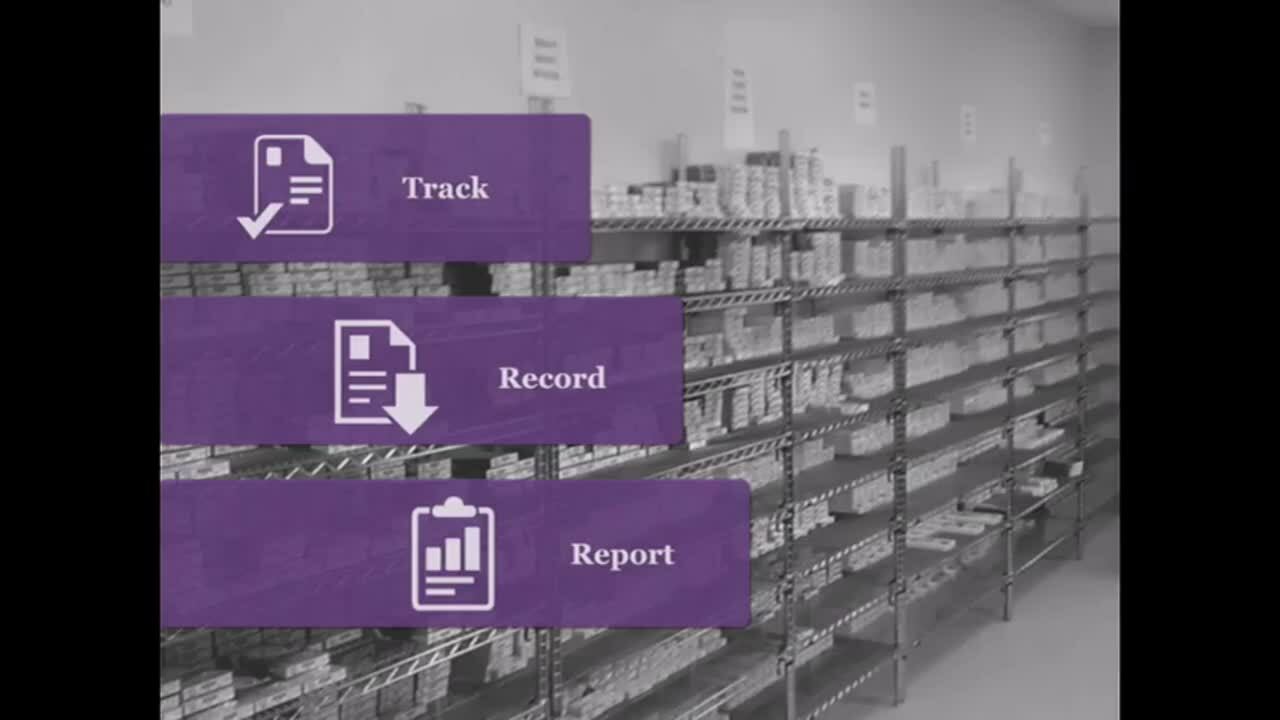How to make your eye center supply management more efficient
McKesson Implant Manager
Original Case Study: Becker’s ASC Review
Written by Laura Dyrda, Becker’s Healthcare
Do you spend hours every week managing the intraocular lens (IOL) inventory at your eye center? Is it a headache to track all your implants and account for every item in inventory? Is the paperwork for these implants stacking up?
Efficiency is extremely important to a surgery center’s bottom line, and supply chain management can easily take a big chunk out of the manager’s day. To assist, a new technology is available for IOL management that can provide a whole set of unique solutions.
McKesson Implant Manager
McKesson’s Implant Manager automates your facility’s IOL processes to improve workflow and provides robust tools so you can better manage your IOL inventory. With a combination of barcode scanning technology and an easy-to-use interface, facilities can eliminate the manual implant inventory process and reduce the risk of errors when receiving IOL inventory. The software records and alerts lens expiration dates, to help prevent losses due to expired inventory. Also, Implant Manager has the capability to quickly and easily track the necessary information of the implanted lens to the patient. It can generate detailed reports to search and verify accurate inventory counts, which can be uploaded into an electronic health record (EHR) system. As a facility uses their IOLs, Implant Manager can auto-generate bill and replace orders, return goods authorizations and FDA patient registration cards. All of this is aimed to give a facility total control of their IOL inventory and save money through gained efficiencies and enhanced productivity.
 Anna Conley is the ambulatory surgery center (ASC) purchasing agent at Cincinnati Eye Institute. Cincinnati Eye Institute performs 1,000 cases per month and carries around 4,500 to 5,000 lenses on consignment. The center uses four IOL vendors — Alcon, Abbott Medical Optic, Bausch & Lomb and Staar Surgical. The center does not have the Staar Surgical IOLs on consignment. There are 25 surgeons who currently perform cases at the center.
Anna Conley is the ambulatory surgery center (ASC) purchasing agent at Cincinnati Eye Institute. Cincinnati Eye Institute performs 1,000 cases per month and carries around 4,500 to 5,000 lenses on consignment. The center uses four IOL vendors — Alcon, Abbott Medical Optic, Bausch & Lomb and Staar Surgical. The center does not have the Staar Surgical IOLs on consignment. There are 25 surgeons who currently perform cases at the center.
Ms. Conley and Ms. Uptergrove both incorporated the Implant Manager technology from McKesson to improve efficiency and supply management at their eye centers.
 Olivia Uptergrove is the Clinical Director of the Eye Surgery Center of North Dallas, which performs more than 400 cases per month. The ASC has seven managing surgeons currently doing surgery. Their inventory includes more than 3,800 IOLs from various vendors including AMO, Alcon, B&L and Staar Surgical. All of the IOLs are on consignment.
Olivia Uptergrove is the Clinical Director of the Eye Surgery Center of North Dallas, which performs more than 400 cases per month. The ASC has seven managing surgeons currently doing surgery. Their inventory includes more than 3,800 IOLs from various vendors including AMO, Alcon, B&L and Staar Surgical. All of the IOLs are on consignment.
Question: How did your workflow go prior to implementing Implant Manager?
Anna Conley: Prior to Implant Manager everything was documented by hand. When lenses arrived they went right onto our shelves. I had no way of tracking which lenses were at our facility. I could only track those that were implanted. When a lens was used I received an “implant card” that had the doctor’s name and patient information.
I was able to scan each implant lens into a spreadsheet, assign a purchase order number and fax it to the correct vendor for a “bill and replace.” I then had to scan each lens into a file on our “S” drive so finance could pay the invoice. Once I was finished with the “bill and replace”, I sent the cards to our front desk. They manually imported the lens, doctor and patient information into our database. Once that was completed, the cards were mailed to the vendor. Quarterly I would have to manually check the expiration dates of each lens and return if expired.
Olivia Uptergrove: Prior to Implant Manager we used a paper system to manage the implants. I had multiple large binders each one with sections for different implants and each size. This was very tedious. Every time an IOL was delivered I manually wrote in the serial number. Then when one was used we would save an extra implant sticker and patient label to put over that serial number.
For expired lens we would just do a quarterly IOL check to look for expiring lenses. I mostly handled the IOL logs myself and it took multiple hours a week. Luckily back then we weren’t full speed because I can’t imagine how much time it would take now with our increased volume.
Q: How complicated were your IOL processes like managing implant and surgical logs?
AC: Very complicated. There were so many steps to follow manually there was no way to make sure every step was always followed and everything was accurate.
Q: How does the process work now that you have Implant Manager?
AC: Once I receive the lenses, I would “receive” them into Implant Manager (a simple scan of the barcodes) and file on our shelves. Our front desk team would upload patient information every morning so I could print patient barcodes. When an IOL was implanted I would scan IOL barcode, scan patient barcode and Implant Manager would link the two together.
Once all IOLs and patients were linked I could click a button to “bill and replace.” At the end of each month we would run a report through Implant Manager to see how many IOLs were implanted.
Q: How has the implementation of Implant Manager impacted your facility with operational efficiencies?
OU: Implant Manager has been a godsend. Every month I check the expiring IOI table, print out the list and end one of my employees to pull those lenses. We now keep a surgery log with an IOI sticker and patient sticker and I just use that to scan the lenses for “bill and replace” at the end of the day. Even with very large shipments of IOLs it only takes me at the most 10 minutes to scan everything in which is amazing.
AC: Implant Manager has made everything much easier. It would take around an hour daily to “bill and replace” IOLs, fax to vendor and attach lens to patient and doctor in our database. Now it takes less than 30 minutes daily to do everything. We are down to only two full-time employees working on IOL information. Before Implant Manager, there were five to six employees on IOLs.
Q: Have you been able to measure the impact, either staff satisfaction or monetary savings such as locating expired product, reallocating FTEs/reduced staff hours, or overall efficiencies gained?
AC: Prior to Implant Manager we would spend hours figuring out where a lens went, which doctor implanted what lens and which lens was associated with a specific patient. I would have to spend hours looking at expiration dates of over 4,500 lenses. Now it is a simple click and complete.
OU: I have not done an actual study to measure the impact. However, since it was just myself handling the lens situation beforehand I can tell you it has made a huge impact on myself and my sanity!
